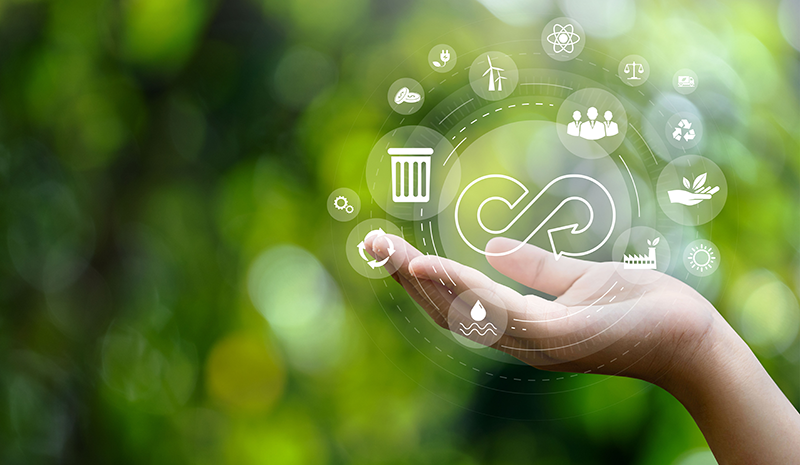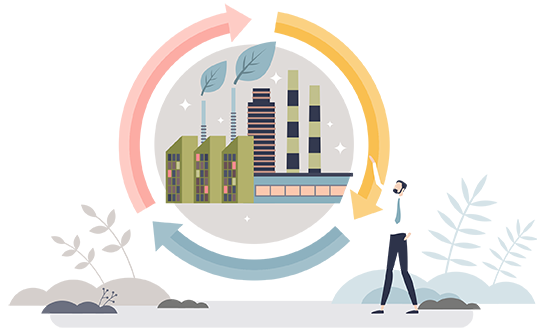July 9th, 2024
Touching virtually every industry from automotive to consumer goods, plastic injection molding is truly a cornerstone of modern manufacturing. However, the environmental impact of its traditional production and disposal methods has warranted a shift toward more sustainable practices. Therefore, a circular economy in this industrial sector becomes imperative to reduce waste and promote resource efficiency. Below we will delve into the strategies and innovations essential to making this concept a reality.
Understanding the Circular Economy
The circular economy is a standard designed to continuously regenerate the use of materials and help eliminate waste. It contradicts the traditional linear economy, which follows a ‘take-make-dispose’ approach. Instead, products and materials are kept in use for as long as possible from start to finish by recycling to maximize their value. It does so by encompassing three principles:
- Thinking through waste and pollution: By rethinking how products are developed and produced, discard and pollution can be minimized.
- Keeping products and materials in use: To extend the lifecycle of products, materials are repaired, refurbished and reused.
- Regenerating natural systems: Ensuring that production processes support and improve natural structures rather than depleting them.
Despite the efficiency of injection molding, the process poses several challenges to sustainability, while imposing obstacles for growing a strong circular economy. These include:
- Material waste: This involves excess from sprues, runners and defective parts that often end up as trash.
- Energy consumption: Injection molding is energy-intensive, which contributes to the carbon footprint.
- End-of-life disposal: Many plastic products are not designed for easy reusability, leading to negative environmental impact.

Strategies for Implementation
To transition to a circular economy, our industry is working diligently to adopt a multi-faceted approach encompassing design sensibility, vigilant material selection, procedural optimization and conscientious end-of-life management. Each of these ideas is equally important and could generate positive results. Here are some examples of what is currently being applied:
Sustainable Design Practices
- Design for recycling: Creating products that are easier to disassemble and recycle can significantly mitigate waste, as well as use of mono-materials and avoiding complex composites.
- Lightweighting: Decreasing the amount of substance in products without compromising functionality can lower consumption and dependance on energy use.
- Modular design: Designing products with segmented parts allows for easier repair, replacement and reusability of individual pieces.
Material Innovations
- Biodegradable plastics: Utilizing biodegradable or compostable plastics to alleviate environmental consequences at the end of the product’s expected life.
- Recycled materials: Incorporating recycled plastics into production can minimize demand for virgin components and lower the carbon footprint. Checking the quality and consistency of these supplies is crucial for upholding strong standards.
- Bio-based plastics: Developing and using plastics derived from renewable sources such as corn or sugarcane can decrease reliance on fossil fuels.
Process Optimization
- Energy efficiency: Implementing energy-efficient machinery and operations can significantly minimize energy consumption. This includes using electric injection molding machines and optimizing cycle times.
- Waste reduction technologies: Technologies such as hot runner systems have been shown to lessen refuse by eradicating the need for runners and sprues.
- Automation and monitoring: Advanced monitoring protocols also improve manufacturing, trim down defects, and cut back on excess.
End-of-Life Management
- Take-back programs: Establishing take-back programs for used goods can ensure that viable elements are returned to the production line as opposed to ending up in landfills.
- Recycling infrastructure: Investing in and supporting sustainable infrastructure helps facilitate smart collection and handling of expended plastics.
- Chemical recycling: Developing chemical salvaging technologies that break down plastics into their monomers for reprocessing also complements mechanical renewal and handles more complex plastic waste streams.
Collaborative Efforts
- Industry partnerships: Collaboration among manufacturers, suppliers, and recyclers has been shown to drive innovation and create homogeneous sustainability practices.
- Government Policies: Supportive government policies and regulations can incentivize greener paradigms by providing funding for research and development in circular economy technologies.
- Consumer Awareness: Educating consumers about the importance of restoring materials and sustainable practices is an important catalyst for moving in the direction of more ecologically conducive products.
In conclusion, making the circular economy a reality for plastic injection molding is not just an environmental necessity but also an opportunity for innovation and growth. As manufacturing systems continue to evolve, adopting viable principles will be key to opening new doors and ensuring long-term success. Here at Slide, we continue to do our part in promoting a circular economy everywhere we can as we support an eco-friendlier future. See our environmental commitment and action page for more information.




